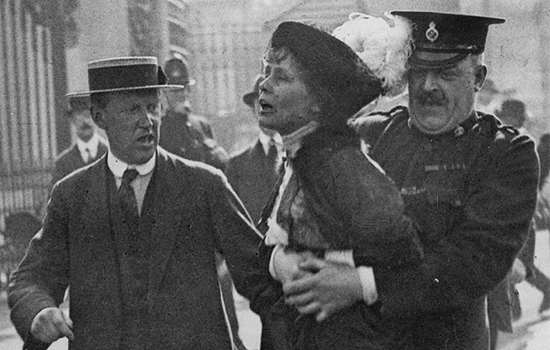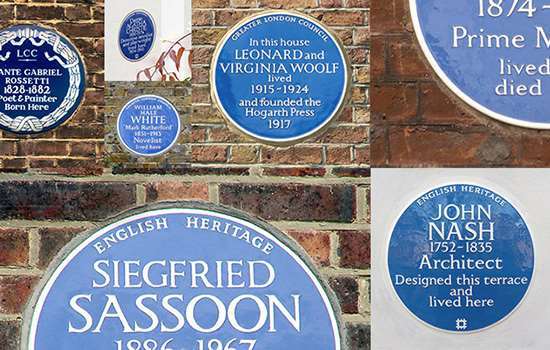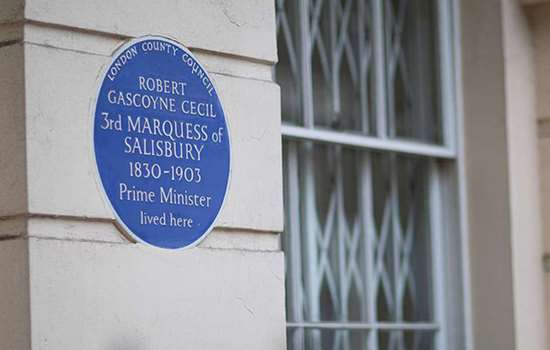LOCKWOOD, Margaret (1916-1990)
Plaque erected in 2018 by English Heritage at 14 Highland Road, Upper Norwood, London, SE19 1DP, London Borough of Lambeth
All images © English Heritage
Profession
Actress
Category
Theatre and Film
Inscription
MARGARET LOCKWOOD 1916-1990 Actress lived here
Material
Ceramic
The actress Margaret Lockwood was one of Britain’s biggest 1940s film stars. She was best known for her roles in The Lady Vanishes (1938) and The Wicked Lady (1945) but also enjoyed a successful stage and television career. She is commemorated with a blue plaque at her childhood home, 14 Highland Road in Upper Norwood.
SOUTH LONDON ROOTS
Margaret Mary Lockwood was born in Karachi, then part of British India, but moved to London aged about four. She spent most of her childhood on the slopes of Gipsy Hill in Norwood, which the family chose for its high ground and ‘very good air’. Lockwood lived on Highland Road from 1922 until 1938, moving with her family between three different addresses on the same street. Number 14 was the first of these addresses and the only one that survived a devastating V1 strike during the Blitz.
In her autobiography Lockwood recalled her home at number 14 as ‘a large upstairs maisonette, from the windows of which we could still see grey plains of the City stretching endlessly’. The family moved to another maisonette, 18a Highland Road, in 1923 and then made another short hop to 30 Highland Road in about 1934.
The young Margaret took an early interest in film. She remembered going to the nearby cinema in Crystal Palace to watch silent-era stars such as Ramon Navarro, John Gilbert, Greta Garbo and Esther Ralston. Once she cried out ‘Oh, aren’t they ever going to stop?’ during a prolonged Ralston screen kiss. Charlie Chaplin was an early favourite, and the young Margaret attempted to entertain her stone-faced mother by doing impersonations of him. Another nearby place of pilgrimage was a sweet shop, where on Saturdays she was allowed sixpence to spend on sherbert dabs, liquorice sticks and gob stoppers.
FILM CAREER
Lockwood was accepted into RADA in 1933, and her childhood sweetheart and future-husband Rupert would often drive her there from Highland Road. She started to attract attention as an emerging star for her part in Beloved Vagabond (1937), and before long Gainsborough Pictures signed her up on a contract worth £3,000 a year – an enormous sum at that time.
Her fame grew with her lead role in Alfred Hitchcock’s mystery-thriller The Lady Vanishes (1938). Hitchcock called her an emerging star ‘of hitherto un-anticipated possibilities’ with an ‘undoubted gift in expressing her beauty in terms of emotion’. She recalled him as ‘a dozing, nodding Buddha with an enigmatic smile’.
In 1938 she had a brief and largely unhappy sojourn in Hollywood, which she described as ‘the most dead-alive place on earth’. It was in Britain that Lockwood flourished. Her role in the Gainsborough melodrama The Wicked Lady (1945) cemented her status as one of the country’s biggest stars. She received 16,000 fan letters a week, lent her name to products such as Lux soap, Pringle knitwear and Dreen shampoo, and became Britain’s highest earning female film star.
LATER LIFE
The 1940s marked the high point of Lockwood’s career, but she continued to act in film, TV and theatre into late age. She was nominated for a BAFTA for her performance opposite Dirk Bogarde in Cast a Dark Shadow (1955), while her role as the villainous Mrs Cheveley in Noël Coward’s stage production of An Ideal Husband (1965) was a big West End hit.
Lockwood was appointed CBE in 1981 and lived her final years quietly in Kingston, successfully resisting Michael Winner’s attempt to involve her in publicity for his remake of The Wicked Lady. She died at the Cromwell Hospital, Kensington, on 15 July 1990.
Nearby Blue Plaques
More About Blue Plaques



